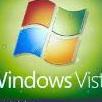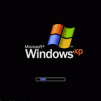Tripredacus last won the day on October 8
Tripredacus had the most liked content!
About Tripredacus

- Birthday September 29
Contact Methods
-
AIM
atrbludgeon
-
Website URL
http://tripredacus.net/
Profile Information
-
OS
Windows 7 x64
Recent Profile Visitors
Tripredacus's Achievements
1.4k
Reputation
1
Community Answers
-

List of Microsoft Agent-powered programs
Tripredacus replied to WadmodderShalton's topic in Software Hangout
Yes they are. -

Interesting Reading on the Internet in Today's World
Tripredacus replied to Monroe's topic in Technology News
IMO the internet got 'bad' once 'normal' people found it. But I think that is more nostalgia for the most part. As for when that happened, I'd say (at least in the US) that happened once Classmates came around. Everyone who was in high school or college went onto there to keep touch afterwards. That site got stepped on by Facebook which was originally designed for college students, but became so popular that old people joined it to keep in touch with those who were on it. For the current generation that is moving into the world, Facebook is seen as a site for old people which is a quote I've heard from multiple people of the younger generations, an insight I am afforded since I 'moonlight' at an arcade. This is only my perspective on things, but normal/old people from 20 years ago were basically computer illiterate, and astonishingly, people of that same stereotype in the current day are still mostly computer illiterate despite having grown up in with computers in a fully connected world. Combine that with the mentality that corporations have of treating adults (employees) like children and you end up with web technologies designed to protect the computer illiterate but in a fashion doesn't feel like the correct way to do it. I find it amusing that the link to this article on the Guardian brings me to a page where half of it is covered by a blue privacy/cookie notification. But overall I think that there are certainly many good points about how the internet has evolved and it is actually better in many ways now than it used to be. It is certainly more useful, something I didn't really grasp because I never had a mobile phone that was new enough to do anything cool until just recently. I think it will get better and we will figure out how to evolve it to deal with the current issues it has. There are more eyes on it now than ever before and that means more ideas of how to do things will occur. But that doesn't mean that there won't be some new dumb trend that everyone adopts that we'll have to deal with. We may end up looking back and laugh about how we were all bent out of shape about captchas and cookie banners in the face of whatever annoying thing we'll be having to deal with. -

How to install apps (.AppxBundle) inside ISO
Tripredacus replied to DMD61's topic in Unattended Windows 10/11 Installation
Can you post what the actual thing was that you changed to make it work? -

How to install apps (.AppxBundle) inside ISO
Tripredacus replied to DMD61's topic in Unattended Windows 10/11 Installation
DISM's Region option expects an actual region. all would be invalid. It wants a country code there. -

Desktop CMOS Battery Dies (Useful Tip)
Tripredacus replied to WalksInSilence's topic in Hardware Hangout
Well, you used the Dell example and I was just replying to it. I can't speak for what OEMs did in Western Europe.- 9 replies
-
- BIOS Reset
- Older MB
-
(and 2 more)
Tagged with:
-
WinPE is not redistributable. Do not ask for something like this again.
-
That isn't the error I get so I wasn't sure. I have a personal account too, but just tied to MPN, migrated to AAD, merged with Mojang and had *some* org privs removed. It is hit and miss whether I can use it to log into anything. Actually for this site it does let me log in but it goes to a 404 page.
-
The first place I figured to look was the Device Partner Center https://devicepartner.microsoft.com/en-us/ However, I no longer have access to this site because my MPN account is completely jacked up. You can see if the site will let you register on it but it may require special priveledges on your MS account, besides having to use their 2FA app which I am also not sure if that can be used with a regular MS account.
-

Desktop CMOS Battery Dies (Useful Tip)
Tripredacus replied to WalksInSilence's topic in Hardware Hangout
I was speaking from a manufacturing perspective. See in that reply that Dell had made custom installations that do include the required drivers. They use the OEM source media that was mailed direct from MS to make their recovery media, this it the type of Windows media that I had worked with, not Retail editions which I would consider to be off-the-shelf. Clarification needed in the cases where some companies sold System Builder on its own, which was actually not permitted, so I won't consider those to be off-the-shelf versions.- 9 replies
-
- BIOS Reset
- Older MB
-
(and 2 more)
Tagged with:
-
There are two things I can think of. You aren't creating a user and setting autologon in the XML, or the file you specified is not present in %WINDIR% at the time. After an install, you can check the setupact.log in the Panther folder and/or in UnattendGC to see if it shows any issues.
-

Desktop CMOS Battery Dies (Useful Tip)
Tripredacus replied to WalksInSilence's topic in Hardware Hangout
No. I just took the time to find it. It is Intel VMD (Volume Management Device), which is directly related to VROC on servers but Intel has been including this feature in their mobile chipsets where it really doesn't serve a purpose. https://www.intel.com/content/www/us/en/support/articles/000101179/memory-and-storage/datacenter-storage-solutions.html- 9 replies
-
- BIOS Reset
- Older MB
-
(and 2 more)
Tagged with:
-

Desktop CMOS Battery Dies (Useful Tip)
Tripredacus replied to WalksInSilence's topic in Hardware Hangout
Older boards default to IDE/Standard mode for the storage controller, but best practice since at least XP era has been to set that to AHCI before installation. So yes, it is common for a system to not boot when BIOS is reset and this is always the first thing to check. Similarly on modern systems using a supported RAID (JBOD) option if an NVMe is installed instead of AHCI,. More modern boards from ODMs within the past 2 years have been shipping with a secondary option relating to the storage controller... which name escapes me right now. Basically it is a feature that only has a benefit for RAID but has been found to be enabled by default where AHCI is the default and also on systems that don't even have a RAID option at all... such as notebooks. This feature was annoying at its launch because Windows required a driver to use it (and boot) in addition to the storage driver and Windows versions at the time didn't have a default driver and there wasn't one initially available for WinPE either. I think current Windows 11 has support for this option now but there certainly is an in-between set of Windows builds that have problems. I hate that I can't remember the name of that option but I had primarily seen it on notebooks from Asus and Clevo.- 9 replies
-
- BIOS Reset
- Older MB
-
(and 2 more)
Tagged with:
-
This specific error means that the key entered does not match the installed SKU of the OS. For example, trying to use a System Builder key on a Retail installation can show this type of error. Good to know it works for you know.
-
Use slmgr with /ipk and put your product key in that way. If it gives you an error, post that message.









